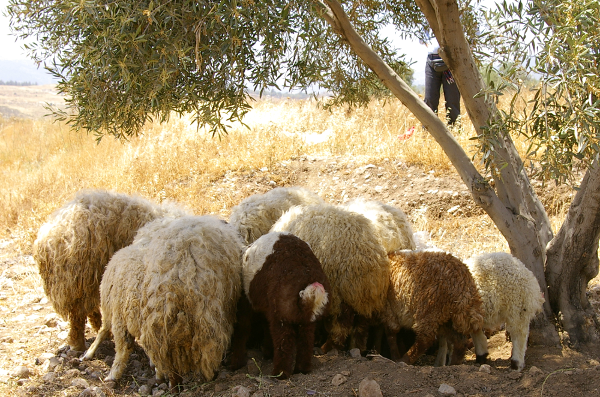Some thoughts on the origins of agriculture
As a first post, I thought I would take the opportunity to jot down some ideas that have been floating around in my head about why hunter-gatherers would have made the transition from extensive use of natural foods to intensive management of domesticated ones. I’m currently developing some of these ideas for full-fledged journal articles, which will have all the requisite citations and background info, and I won’t include much of that here. Many of these ideas stem from my understanding of Complex Adaptive Systems Science (a.k.a. ‘Complexity Theory). For a nice glossary of complexity terms, see the Resource Guide and Glossary for Nonlinear/Complex Systems Terms compiled by Jeffrey Goldstein of the Plexus Institute, and the Glossary of Nonlinear Terms compiled by Terry Marks-Tarlow, Keith Clayton, and Stephen Guastello of thecomplexityspace.com. Feel free to email me with any questions or comments, or use the comment section below!
-
Hypothesis: Human subsistence strategies are socio-ecological attractors in the phase space created by the ecological characteristics of the food stuffs being used, the general environmental productivity, and the technology, cultural adaptations, mobility strategy, size, and organization of the group. These variables are my “rule of hand” variables; there could certainly be others, but I hypothesize that these are the most important. These attractors are zones of relative stability within the entirety of the phase space; they represent combinations of socio-ecological variables that make it easier, or at least more predictable to make a living. As such, they tend to exert pull on human groups, that keeps groups near the “center of gravity” of these attractors (i.e., in a particular basin of attraction).
-
Human subsistence attractors are separated by repellers, which are combinations of those previously listed variables that prove to be unstable. These repellers tend to push groups away from them.
-
The interaction of subsistence attractors and repellers is such that the socio-ecology of human groups tend to coalesce in patterns of relatively mutually exclusive subsistence “phenotypes” (i.e., distinct clustering as, e.g., hunting/gathering, fishing, herding, extensive agriculture, or intensive agriculture subsistence “types”).
-
These patterns are dynamic, however, and change over time and space. Both internal and external forces can change the relative strength and weakness of attractors and repellers. This means that there are some sets of conditions (in the phase space) in which it is easier to make a transition between two particular attractors (e.g., hunting to farming) than it would be under other sets of conditions. And the converse is also true (it is sometimes harder to make a transition).
-
If this is all true, then there must have been some internal and/or external changes of the socio-ecological phase space in the centers of early agriculture, apparently sometime at the end of the Pleistocene, that either, a) weakened the hunting/gathering attractor, b) strengthened a nascent farming/crop management/herding attractor, c) weakened the repellor separating the two, or d) any combination of the above. The interesting thing about this idea, is that it does not require any one single driver of this change. It could be climate, it could be environmental change (even human-induced!), it could be cultural changes, it could technology, it could be population, or it could be (most probably is) a combination of these, and other things. And this combination can be unique to each center of early agriculture, but can still be explained under the same body of theory. That last aspect is, in my opinion, a very powerful attribute that sets this complexity-based hypothesis apart from other explanations of the rise of early domestication economies.
So where does that leave us? Well, what I’m doing now is trying to show that these hypothesized attractors and repellers actually exist, and so I’m undertaking a multivariate analysis of cross-cultural data with my “rule of hand” variables. That manuscript is most of the way through, and I hope to have it out very soon. Further, I want to look at the archaeological record of some early centers of domestication (let’s say the Near East and China), and see if we can find any evidence for these kinds of phenomena. That’s a little further down the line, but I’m working on it too. I’ll be posting more of my ideas here, as they develop.
In the mean time, Here’s an image of sheep and wheat to look at:


Leave a comment